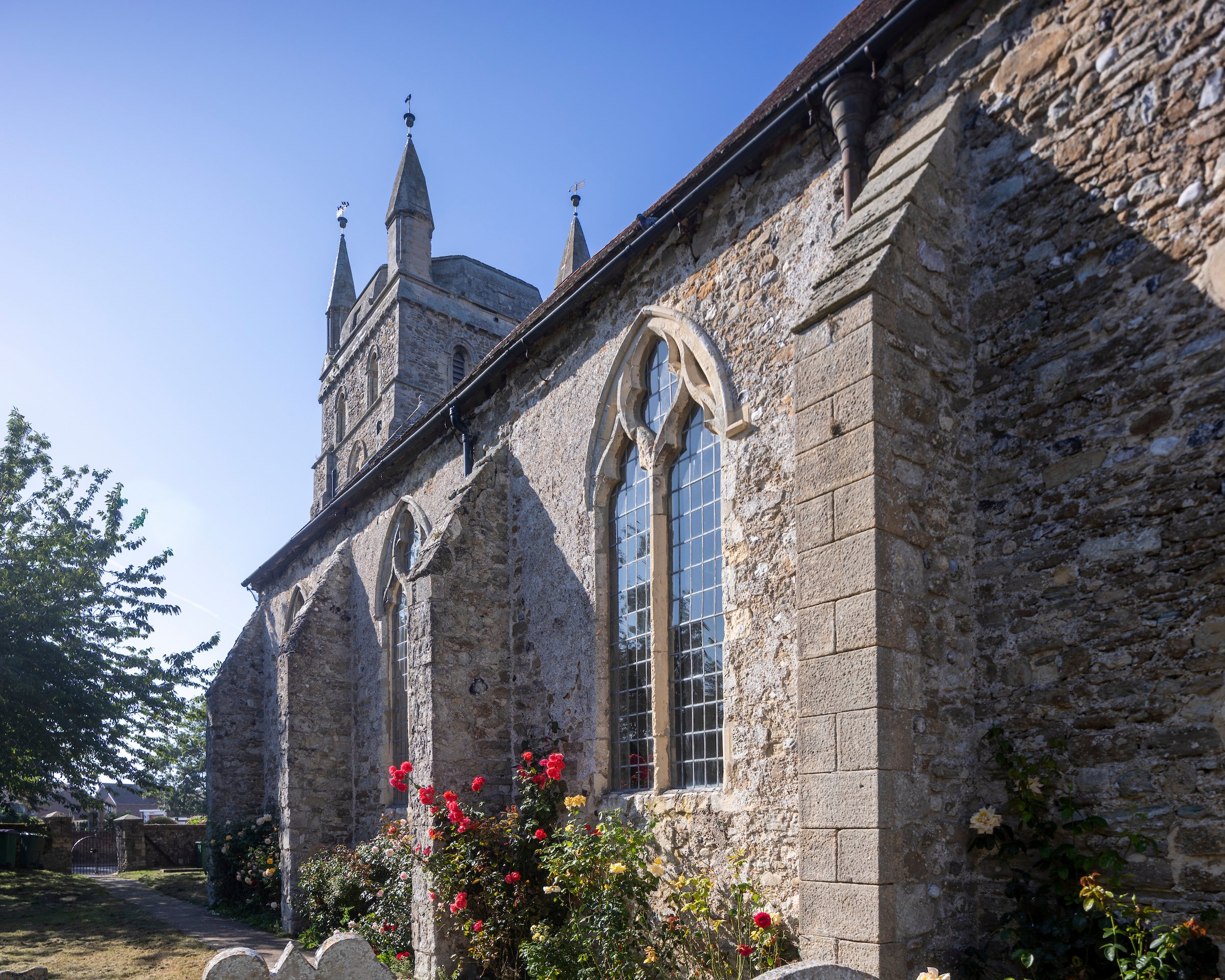
History of the Trust
THE FIRST FORTY YEARS…
As the 1970s progressed, the church councils of the Marsh were, like so many, facing an increasing crisis of funding to maintain Grade 1 listed medieval structures which had lasted centuries despite all that the elements had thrown at them. Two parishioners, Shaun Leavey, who lived at Becket’s Barn, Fairfield, and Lieutenant Nick Bates RN, son of a local farmer, had discussed ways in which the public fascination with the Marsh and its churches could be harnessed. When, in 1980, Shaun was approached for Marsh information, by Christopher Neve in respect of an article about the area for Country Life, the thought of a fund to support the churches was born, and the publicity brought in unexpected donations, causing Shaun to open (in some haste) a bank account in the name of an organisation which, as yet, had no actual structure!
Advice was hastily sought from Sir John Winnifrith, the retired Director-General of the National Trust, about the establishment of a charitable fund, and, after much forethought, planning, and informal recruitment of potentially sympathetic and influential people, a letter was published in The Times in November 1981. Michael Nightingale of Cromarty, the writer of that letter, called upon all interested parties to attend a public meeting on 5th December 1981, with a view to formulating the organisation of a body of “friends”. On the morning of 5th December, another letter, jointly from Archbishop Runcie, Richard Ingrams, and John Piper, was published in The Times, urging support. At the meeting, chaired by local artist John Doyle, with Shaun Leavey providing the secretarial record, a formal Steering Committee was established. Publicity of both formal and satirical nature (it all helps) followed in the Press, in particular an article by Richard Ingrams commissioned by Bill Deedes for the Daily Telegraph, and a humorous item by Miles Kington in The Times.
In May 1982, after due notice, and consultation with the Charity Commission, a large public meeting at Leeds Castle agreed a Constitution and a Trust Council. The discerning will note that this was during the Falklands conflict, HMS Sheffield having been attacked disastrously on 4th May. Among the apologies read out to the Leeds Castle meeting were those of Lieutenant Nick Bates, telegraphed from the Sheffield a day or two before she faced catastrophe. Nick survived and remains, like Shaun Leavey, an enthusiastic and supportive member of the Trust.
The first Trust Chairman was John Doyle (now President) and Shaun Leavey was the Secretary who guided matters through the initial uncertain times, though it has to be said that the public response was so generous as to put matters on a firm footing within only a few years. Under our Constitution, fourteen medieval churches, all south and east of the Royal Military Canal, can receive help with repair and maintenance of their fabric and curtilage. In accepting donations, subscriptions and legacies, the Trust always took the view that the accumulation of a capital endowment to earn money for the churches was essential, if long-term success was to be possible. It was said that, if we kept them weathertight, they would stand for ever. That has remained the guiding principle, though in recent years our success has meant an increasing emphasis on areas beyond roofs, masonry, windows and gutters. Major projects have been undertaken, some needing several phases and a number of years, but behind it all remains a public will (national, and indeed worldwide) that these fascinating, well-loved and well-known churches should continue to minister to the people of Romney Marsh.
Learn More: Reflections on forty years of the Romney Marsh Historic Churches Trust, with our President John Doyle MBE.

